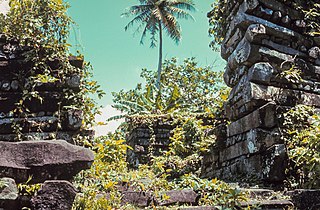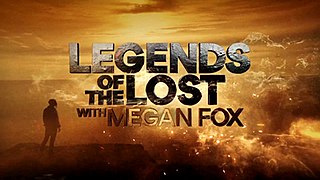
Proceedings of the National Academy of Sciences of the United States of America is a peer-reviewed multidisciplinary scientific journal. It is the official journal of the National Academy of Sciences, published since 1915, and publishes original research, scientific reviews, commentaries, and letters. According to Journal Citation Reports, the journal has a 2022 impact factor of 11.1. PNAS is the second most cited scientific journal, with more than 1.9 million cumulative citations from 2008 to 2018. In the mass media, PNAS has been described variously as "prestigious", "sedate", "renowned" and "high impact".
Pseudoarchaeology—also known as alternative archaeology, fringe archaeology, fantastic archaeology, cult archaeology, and spooky archaeology—is the interpretation of the past by people who are not professional archaeologists and who reject or ignore the accepted data gathering and analytical methods of the discipline. These pseudoscientific interpretations involve the use of artifacts, sites or materials to construct scientifically insubstantial theories to strengthen the pseudoarchaeologists' claims. Methods include exaggeration of evidence, dramatic or romanticized conclusions, use of fallacious arguments, and fabrication of evidence.

Ancient astronauts refer to a pseudoscientific set of beliefs that hold that intelligent extraterrestrial beings visited Earth and made contact with humans in antiquity and prehistoric times. Proponents suggest that this contact influenced the development of modern cultures, technologies, religions, and human biology. A common position is that deities from most, if not all, religions are extraterrestrial in origin, and that advanced technologies brought to Earth by ancient astronauts were interpreted as evidence of divine status by early humans.

Graham Bruce Hancock is a British writer who promotes pseudoscientific theories involving ancient civilizations and hypothetical lost lands. Hancock speculates that an advanced ice age civilization was destroyed in a cataclysm, but that its survivors passed on their knowledge to hunter-gatherers, giving rise to the earliest known civilizations of ancient Egypt, Mesopotamia, and Mesoamerica.

Nan Madol is an archaeological site adjacent to the eastern shore of the island of Pohnpei, now part of the Madolenihmw district of Pohnpei state in the Federated States of Micronesia in the western Pacific Ocean. Nan Madol was the capital of the Saudeleur dynasty until about 1628. The city, constructed in a lagoon, consists of a series of small artificial islands linked by a network of canals. The site core with its stone walls encloses an area approximately 1.5 by 0.5 kilometres and it contains 92 artificial islets—stone and coral fill platforms—bordered by tidal canals.

A flood myth or a deluge myth is a myth in which a great flood, usually sent by a deity or deities, destroys civilization, often in an act of divine retribution. Parallels are often drawn between the flood waters of these myths and the primeval waters which appear in certain creation myths, as the flood waters are described as a measure for the cleansing of humanity, in preparation for rebirth. Most flood myths also contain a culture hero, who "represents the human craving for life".

The Folsom tradition is a Paleo-Indian archaeological culture that occupied much of central North America from c. 10800 BCE to c. 10200 BCE. The term was first used in 1927 by Jesse Dade Figgins, director of the Denver Museum of Nature and Science. The discovery by archaeologists of projectile points in association with the bones of extinct Bison antiquus, especially at the Folsom site near Folsom, New Mexico, established much greater antiquity for human residence in the Americas than the previous scholarly opinion that humans in the Americas dated back only 3,000 years. The findings at the Folsom site have been called the "discovery that changed American archaeology."

Usselo ['ʏsəloː] is a Dutch village in the municipality of Enschede in the eastern Netherlands region of Twente. It is located just west of Enschede and east of Boekelo. It has existed for over 800 years. Archaeology shows that the region was inhabited more or less continuously since the last ice-age. The region is very fertile and will support agriculture and cattle. The countryside is marked by artificial hills, called es or esch, which were formed by depositing dung mixed with dirt. A prime example is the Fleringer Esch, near Fleringen.

Fingerprints of the Gods: The Evidence of Earth's Lost Civilization is a 1995 pseudoarcheology book by British writer Graham Hancock, which contends that an advanced civilization existed in prehistory, one which served as the common progenitor civilization to all subsequent known ancient historical ones. The author proposes that sometime around the end of the last ice age this civilization ended in cataclysm, but passed on to its inheritors profound knowledge of such things as astronomy, architecture and mathematics.

The Bosnian pyramid claims are pseudoarchaeological theories put forward to explain the formation of a cluster of natural hills in the area of Visoko in central Bosnia and Herzegovina. Since 2005, Semir Osmanagić, a Bosnian-American businessman based in Houston, Texas, has claimed that these hills are the largest human-made ancient pyramids on Earth. His claims have been overwhelmingly refuted by scientists but he has proceeded to promote the area as a tourist attraction.
William M. (Bill) Napier is the author of five high tech thriller novels and a number of nonfiction science books.
Trinity Southwest University (TSU) is an unaccredited evangelical Christian institution of higher education with an office in Albuquerque, New Mexico. Principally a theological school that encompasses both the Bible college and theological seminary concepts of Christian education, it offers distance education programs and degrees in Biblical Studies, Theological Studies, Archaeology & Biblical History, Biblical Counseling, Biblical Representational Research, and University Studies.
The Younger Dryas impact hypothesis (YDIH) proposes that the onset of the Younger Dryas (YD) cool period (stadial) at the end of the Last Glacial Period, around 12,900 years ago was the result of some kind of extraterrestrial event with specific details varying between publications. The hypothesis is controversial and not widely accepted by relevant experts.

Bruce Kennedy is an American television producer, screenwriter, and director. He has won a News & Documentary Emmy Award and been nominated for a Primetime Emmy Award.

Ancient Aliens is an American television series produced by Prometheus Entertainment that explores the pseudoscientific hypothesis of ancient astronauts in a non-critical, documentary format. Episodes also explore related pseudoscientific and pseudohistoric topics, such as: Atlantis and other lost ancient civilizations, extraterrestrial contact and ufology, and popular conspiracy theories. The series, which has aired on History since 2010, has been a target for criticism of History's channel drift, as well as criticism for promoting unorthodox or unproven hypotheses as fact. According to Smithsonian, episodes of the series overwhelm the viewer with "fictions and distortions" by using a Gish gallop.
Andrew Michael Tangye Moore, also known as A. M. T. Moore, is a British archaeologist and academic. He is a professor at the Rochester Institute of Technology (RIT).

The 2012 phenomenon was a range of eschatological beliefs that cataclysmic or transformative events would occur on or around 21 December 2012. This date was regarded as the end-date of a 5,126-year-long cycle in the Mesoamerican Long Count calendar, and festivities took place on 21 December 2012 to commemorate the event in the countries that were part of the Maya civilization, with main events at Chichén Itzá in Mexico and Tikal in Guatemala.

James Lawrence Powell is an American geologist, writer, former college president and museum director. He chaired the geology department at Oberlin College later serving as its provost and president. Powell also served as president of Franklin & Marshall College as well as Reed College. Following his positions in higher education, Powell presided over the Franklin Institute and the Natural History Museum of Los Angeles.

Magicians of the Gods: The Forgotten Wisdom of Earth's Lost Civilisation is a 2015 book by British pseudoarchaeology writer Graham Hancock, published by Thomas Dunne Books in the United States and by Coronet in the United Kingdom. Macmillan Publishers released an "updated and expanded" paperback edition in 2017.

Legends of the Lost with Megan Fox is an American docu-series starring and co-created by Megan Fox that premiered on December 4, 2018, on the Travel Channel.















